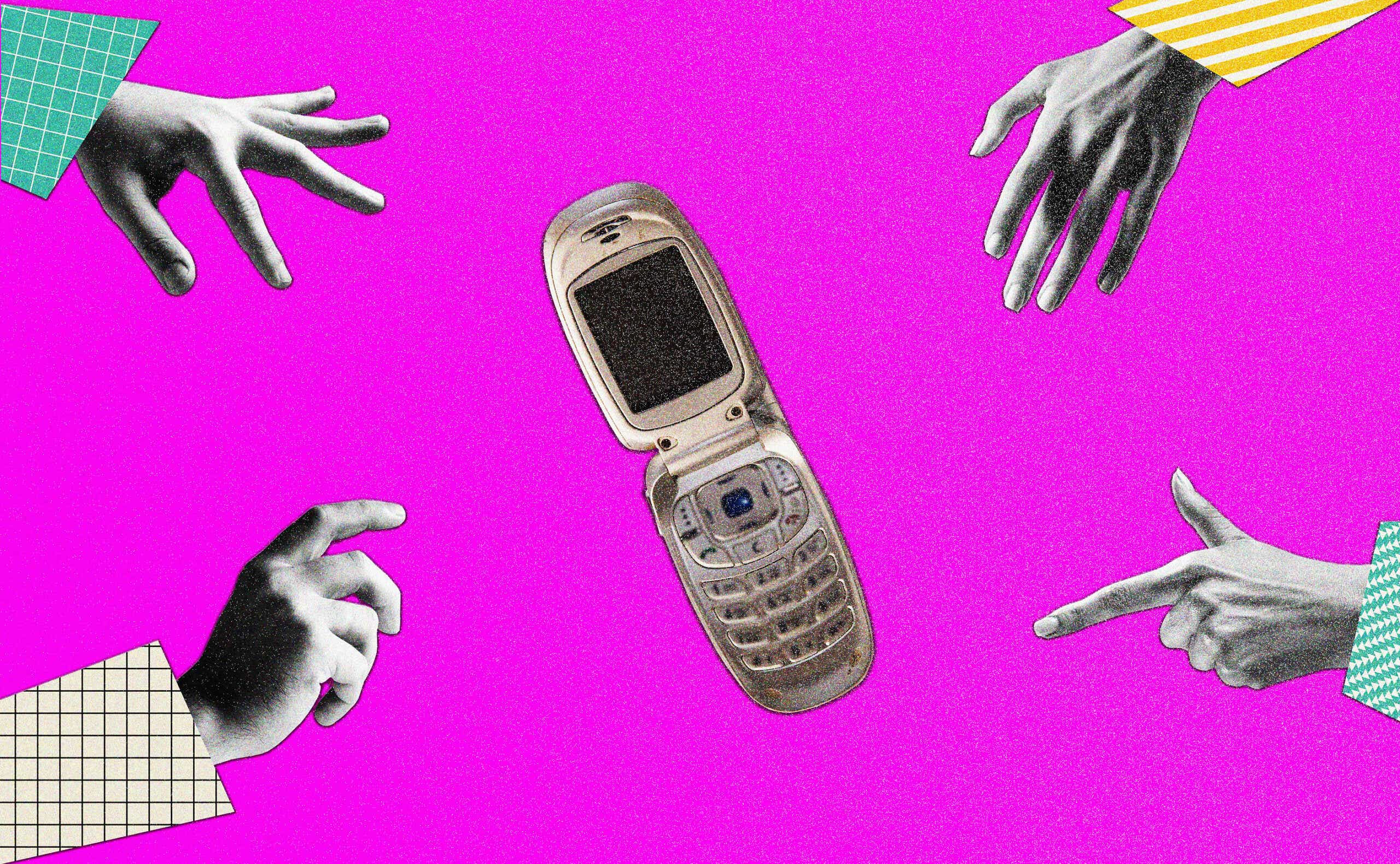Four years ago, at the height of the pandemic, Jose Briones was cooped up at home and cut off from his friends and family. So he did what most of us did at the time — he binged Tiger King and scrolled. Before long though, he found himself spending up to 12 hours a day staring at his smartphone. That’s half of a whole day, the entire length of The Lord of the Rings trilogy lost to his Android.
“That’s when I started to notice that I needed to make a change,” Briones tells Katie Couric Media.
By that point, Briones had already tried to break his habit by removing the most addictive apps from his home screen or using tools designed to restrict screen time. Nothing stuck.
“I just came back to my smartphone again and again and again,” Briones, 28, says.
So Briones did something drastic — at least by modern-day standards: He ditched his smartphone for what users are calling a “dumbphone,” a stripped-down device that allows him to call and text, but little else.
What is a dumbphone?
Briones is one of a growing group of dumbphone users who believe our society's over-reliance on high-tech devices is harming our mental health and relationships, and generally impacting our ability to be present and appreciate the world around us.
Increasingly, scientists are beginning to suspect this too. There’s a growing body of evidence that social media is addictive and that excessive scrolling is linked to depression and anxiety. Some experts, like influential social psychologist Jonathan Haidt, even argue that smartphones are fueling a mental health crisis among Gen Z.
Interestingly, they’re the ones championing this movement, not the folks who were around when all phones were “dumb” (aka us “olds”). It’s not clear exactly how many people have taken the plunge and traded in their iPhones for flip phones, but interest in the “digital minimalism” lifestyle is growing; Briones, who moderates the subreddit r/dumbphones, a forum where users share their dumbphone hacks and their old-school devices, says the online community has grown by some 30,000 members over just the past couple years.
Benefits of ditching your smartphone
Dumbphone evangelists say they feel more clear-headed and less distracted than before they downgraded, and that they derive a certain “joy of missing out” from not knowing what’s trending or not getting that breaking news alert.
“I’m more calm, more present, definitely less anxious because I have more control, and I have more time to think and process my emotions,” Briones says. “I think that’s something that I missed when I had a smartphone.”
Companies are beginning to cater to this desire to disconnect too. Punkt, a Swiss manufacturer, sells a “minimalist mobile,” which has a small screen, a full keyboard, and looks a little like a Nokia circa 2005. Stateside, there’s Light, a Brooklyn-based company co-founded by Joe Hollier. He tells us he first conceived of the Light phone nearly a decade ago, back when smartphones seemed like nothing short of a modern-day miracle.
“When I first introduced people to the idea of the Light phone, a lot of people were just getting their first smartphones and were like, ‘Why would I ever want to leave this thing?,’” Hollier says. “I think we’ve seen that conversation really change throughout the years.”
The Light phone, which first hit the market in 2017, is “designed to be used as little as possible,” Hollier says. For a dumbphone, it’s fairly sophisticated: It can call and text; has an alarm, timer, calculator, calendar, GPS, and can even be used as a WiFi hotspot (all these features explain its less-than-light price tag of $300). The goal, Hollier says, was to create something that facilitates escaping the infinite scroll without depriving users of all of a smartphone’s modern conveniences.
Downgrading to a dumbphone in a world made for the latest tech does comes with challenges though, Briones says. Some are small (you can’t scan those silly little QR code menus at restaurants, and getting an Uber is a little more involved, Briones says); others are more significant. Like most white-collar workers, Briones has to monitor his email as part of his job, but says that by talking with his employers and clients, he’s been able to create boundaries that allow him to “go digital free when I want to and engage on my terms.”
I’m sure to some, that sounds like a lot of work. But it’s a trade-off more and more of us seem willing to make. “As one of our users put it, ‘I kind of view it as a minor inconvenience for the price of getting my life back,’” Hollier says.









